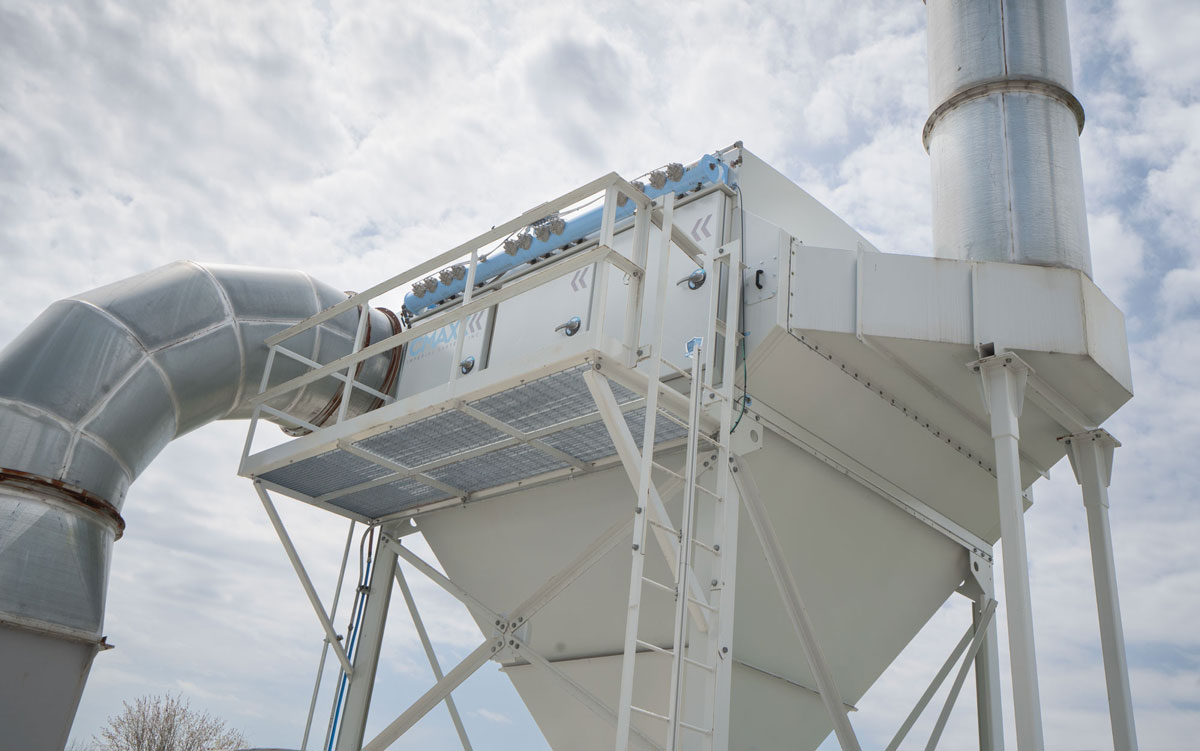We manufacture dust control systems that use filters (bags or cartridges). So, we obviously have a preference for dry systems. But what about a wet dust collector?
Wet Dust Collector Pros and Cons
Both wet and dry systems have their advantages and disadvantages. Many of them depend on your process, the type of dust you produce, and your individual needs. Baghouse and cartridge filter dust collectors work safely and efficiently for many years and in many different applications. However, as the concern of combustible dust issues grows, some companies are considering a wet dust collector. This system “scrubs” the air stream with water for dust control. Read on for some points to think about.
Type of Dust
Industrial wet dust collector design systems are often used where there is a concern about combustible dust. This is especially true for metal dust, which has a high likelihood of sparks coming into contact with the dust. You can also use dry systems in this application. But if there is a risk of deflagration, the system should include safety devices. This includes spark traps and fire-retardant filters that will not fuel a fire. Our DeltaMAXX™ nanofiber fire-retardant filters are rated to safely control a deflagration inside the collector.
Wet systems (often called wet scrubbers) can decrease the risk of fire or explosion as well. Water “scrubs” the air traveling through the collector, mixing with dust and forming sludge. This ensures that even if there is an ignition source, there’s no dust cloud or dry dust to ignite. At the same time, you can use dry collectors with proper maintenance and housekeeping safely for many years. They also can collect almost every type of dust imaginable.
Particulate Size
The filters in dry systems are more efficient at collecting and removing very fine particulate. Nanofiber filters are 99.9% efficient in capturing particulate down to .3 microns. Some cutting and grinding produce larger particulate. But applications like welding, plasma and laser cutting, and other processes produce very fine particulate metal fumes. A dry collector system can more efficiently capture these particles. In a wet system, it may be difficult to get very small particulate to settle out of the water to collect them. However, some wet system designs will handle this. Overall, a dry collector is more efficient for smaller particulate, smoke, and welding fumes.
Wed Dust Collector Operation Costs
To make a wet dust collector efficient at removing smaller particles, the system requires higher water pressure and a lot of energy. This increases cost. For larger particles, the energy costs are lower because it’s easier to get these particles to drop out. A dry collector requires compressed air to periodically clean the filters. Adjust the frequency of pulsing to suit individual needs. Filter media like DeltaMAXX nanofiber that pulse-clean more efficiently can further decrease the frequency. Both types of systems require appropriate equipment to maintain the correct airflow.
System Setup
Individual workstations such as downdraft tables often use a wet dust collector. With a central dust collection system, the requirements for ductwork and proper system CFM may be similar for wet and dry types. Because a dry system is more efficient at capturing smaller particles, you can use these where there are multiple locations in a facility producing welding or cutting fumes. Since dry systems are more effective in collecting smoke and fumes, they may be able to operate at a lower CFM. As a result, this saves energy and decreases the noise produced by the system.
On equipment like a downdraft table where sparks and metal dust are in close proximity, one can use a wet collector. However, many downdraft tables use a dry collector because they produce small particulates, smoke, or fumes. A full assessment of your company’s needs will help determine which type of system would be most beneficial for you. The assessment will consider both safety and long-term operating/maintenance costs.
Maintenance and Disposal
Maintaining a dry dust control system usually means changing the filters regularly and monitoring differential pressure. You must dispose of the filters which contain dust according to the standards for that material. You must dispose of the collected dust as well. Maintaining a wet dust collector system includes making sure the water remains clean, without too much material dissolved in it. Dispose of the contaminated wastewater. A wet collector requires the removal and disposal of sludge. The sludge may also need to be mixed with other materials or dried to make it safer or more easily disposable. Both system types will require proper housekeeping and maintenance of the ductwork and work areas to make sure dust doesn’t accumulate.
Depending on your type of dust, there may be regulations for how your material needs to be disposed of. With a dry system, bags or cartridge filters usually filter the dust into a container for disposal. With a wet system, the accumulated dust settles out of the water and the sludge must be collected and disposed of. Since the sludge will eventually dry, it is often mixed with an inert substance like sand to make it safer to handle. Many waste management facilities have different regulations for dry and wet materials.
Conclusion: Consult a Pro Before Buying a Wet Dust Collector
Contact the professional staff at Imperial Systems today to learn more about solutions to your dust control concerns. Fill out our contact form or give us a call at 800-918-3013.


